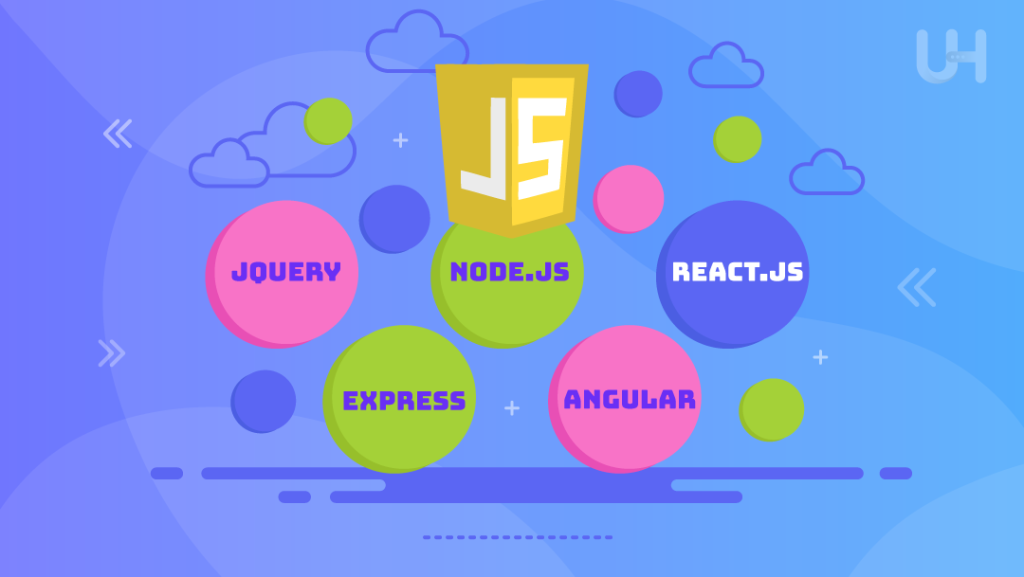
Similar to other frameworks, JavaScript frameworks are gaining more popularity in this era of web development. They have fundamentally changed the ways in which developers design, compose, and even orchestrate the hosting of modern interactive and dynamic web applications. But what is the meaning of the JavaScript framework?
A JavaScript framework is, in the most basic form, a type of consolidated building blocks of one or more libraries and their associated code, which have already been written. Their objective is to diminish the burden of developer’s work in the web development processes by offering standardized solutions.
Using JavaScript frameworks means that developers do not have to confront simplistic yet highly tedious problems such as writing copious lines of code and repeating themselves. JavaScript framework development is done in a way that takes care of most, if not all, of the logic that needs to be worked on in the application, design, and user experience.
We will cover some of the most popular frameworks in JavaScript along with their noteworthy features, benefits, and uses. Whether you are a specialized professional trying to learn new skills or someone newly stepping into the domain of web programming, you must understand that frameworks are an essential part of building modern, responsive, scalable web applications.
Advantages: Why Do Developers Love JavaScript Frameworks?
The value of JavaScript frameworks among developers has grown massively, which aids significantly in enhancing the development process of web applications. So, what about JavaScript frameworks that have earned developers’ affection?
First off, the advantage of increased productivity attained on JavaScript frameworks cannot be argued. Frameworks come with added libraries of pre-written codes and verbose constructs which ensures that the workflow of development is enhanced to the point whereby applications can be developed in record time. Through frameworks, added features guarantee that tasks that would demand a reasonable amount of coding are accomplishable in a few lines.
On top of that, JavaScript frameworks enhance how well a codebase is organized and structured. Frameworks contain best practices through internal attributes such as routing, state managing, and dependency injection, providing boundaries within which applications can be structured and organized. This improves the overall quality of the code and its documentation since multiple developers can collaborate when a clear, common convention is established.
Even more, frameworks enhance the quality of a community and contribute to the existing Documentation that serves as a resource, along with tutorials and forums. This allows for knowledge and innovative collaboration, thereby enabling developers to observe new industry practices with web development via virtual private servers.
As a whole, the civic JavaScript frameworks community actively supports using these frameworks and contributes towards their development as they enable the efficient, reusable, organized, and industry-standard approach to building robust, scalable, and easily managed web applications.
Overview: Top 10 JavaScript Frameworks for 2024
Here’s a list of the top ten JavaScript Frameworks for 2024:
React.js: Efficiency and JSX Powerhouse
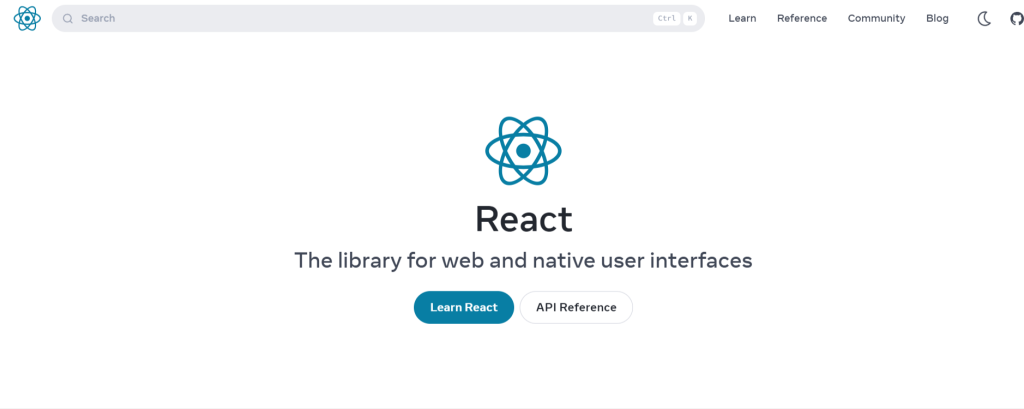
In the tech world, React.js is, and will surely stay, one of the most renowned JavaScript Frameworks known for its power and effectiveness in the use of JSX. Facebook-owned framework named React.js Advanced algorithms for working with user-friendly interfaces. The framework makes the possibility for significantly Java to enable faster than traditional rendering smarter user interfaces to be expanded with easy & fast engineering.
Key Features and Benefits
React.js has a component-based structure as its primary feature. This model encourages modularity and code reuse. Developers can build self-contained UI components that encapsulate their state, which results in cleaner, more maintainable code. Moreover, Expressive UIs are much easier to understand with React because of JSX, a syntax extension that enables writing HTML within JavaScript. Declarative and expressive UIs are easy to create.
Use Cases and Applications
React.js is applied across many industries and domains, starting from social applications to e-commerce platforms, as well as in enterprise web applications that need scalable enterprise hosting solutions. It is suitable for any type, big or small, ranging from a small business application to a large-scale enterprise application. React.js has been adopted by well-known companies like Airbnb, Netflix, and Instagram due to its performance and reliability, solidifying its position as the best framework for Javascript in 2024.
TezJS: Lightning-Fast with Zero Learning Curve
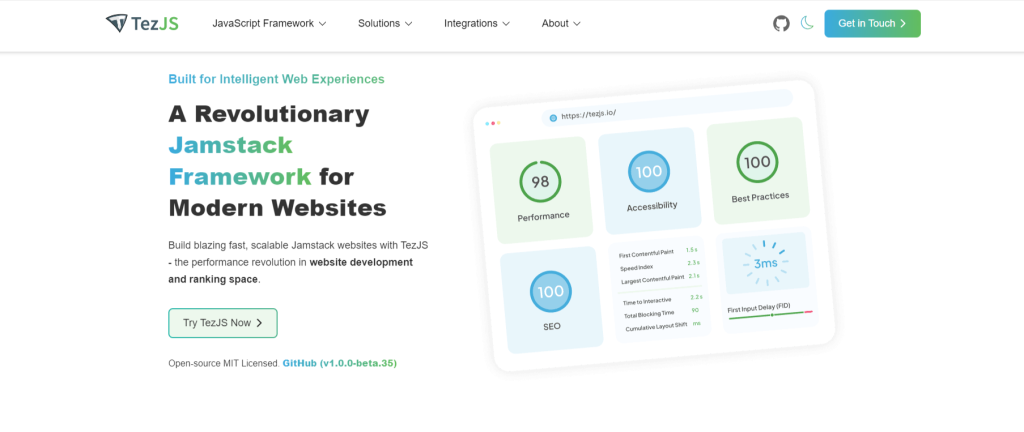
TezJS is a breath of fresh air in the Javascript Frameworks ‘competition’ as it brings unmatched speed and ease of use. With performance and usability as the primary goals of its development, TezJS seeks to simplify the workflows of developers by giving them extreme performance without a steep learning curve. Be it a seasoned web development veteran or a newbie, TezJS strives to make the process of building web applications frictionless.
Speed and Performance
TezJS’s key offering is its exceptional performance. TezJS is designed with high performance in mind, which utilizes the latest technologies to enhance performance and improve load times. By optimizing the critical rendering phase and pruning overhead, TezJS guarantees that applications built with the framework will provide an exceptional user experience with instantaneous response times.
Simplicity and Ease of Use
Besides its speed, TezJS makes sure that there’s no learning ecosystem – or “curve” – involved. While other frameworks come with a whole array of steep and long setups and configurations, they will never experience that with TezJS because of its simple and straightforward API. TezJS, with its almost ‘bare bones’ approach to development, allows developers to give more focus on building amazing features rather than complex frameworks slack and nasty boilerplate code.
Use Cases and Applications
TezJS is appropriate for different cases and applications like blogging, developing one-page websites, and even creating complex enterprise web applications. Its speed and ease of use are advantages for projects that need to be developed and deployed quickly. Moreover, its extensive feature set and performance optimizations guarantee that applications built with TezJS are dependable and fast.
Vue.js: Versatile Maestro with Reactive Data Binding
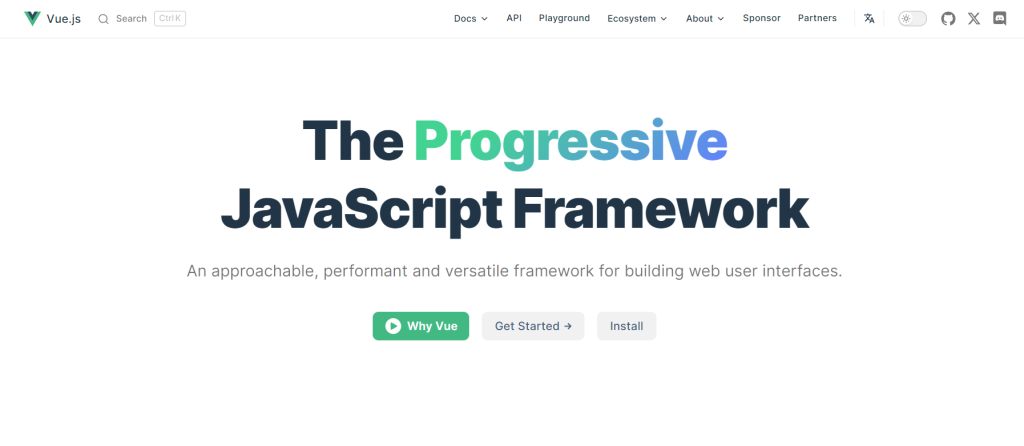
Vue.js has emerged as a one-man orchestra of sorts in the world of JavaScript frameworks. Vue is extremely easy to adopt and comes with various powerful features enabling unmatched flexibility. Developed by Evan You, Vue.js offers an effortless and elegant solution that enables developers to create modern web applications with ease. Its popularity is attributed to the focus on simplicity and progressive adoption while doing away with the steep learning curves that plague other frameworks. For those looking to build powerful admin interfaces, an admin framework based on Vue.js helps streamline the development process of crafting responsive and rich-featured admin panels.
Reactive Data Binding
The most noticeable feature of Vue.js is reactive data binding. This framework allows developers to make user interfaces dynamic and interactive by directly connecting data with the application’s DOM. The responsive data binding ensures that changes to data are automatically applied to the UI without having to rely on manual updates which can be cumbersome and complicated.
Ready to Deploy Your Next JavaScript Application?
Check out Ultahost’s excellent Node.js hosting services for your JavaScript applications. We provide seamless deployment along with infrastructure, dependable support, and scalable resources. Enjoy your experience with Ultahost and check out our offers today!
Aurelia.js: Modern UI Framework with Clean Documentation
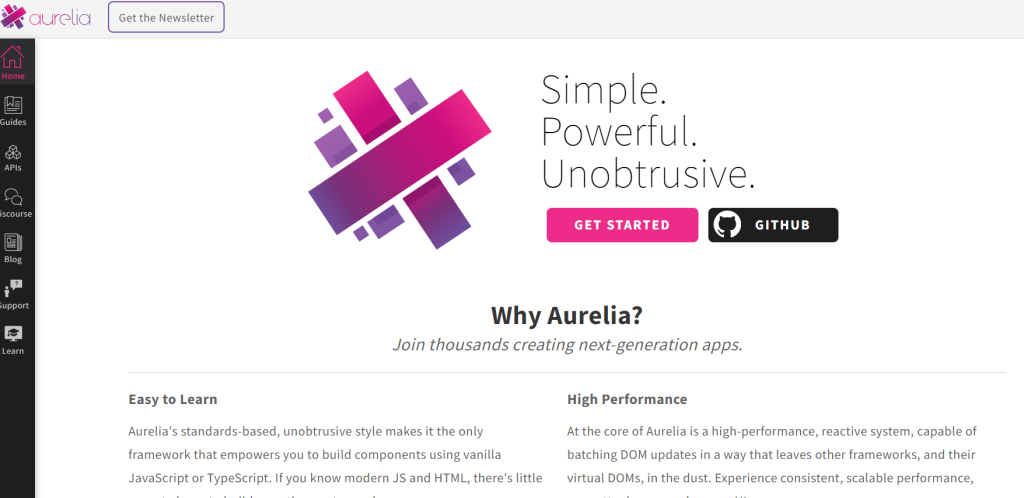
Aurelia.js is a modern UI framework that is specially designed to be clean, simple, flexible, and easy to use. It also has a different way of developing web applications that emphasize the usage of contemporary JavaScript standards. With its clean and elegant architecture, Aurelia.js provides developers with an exceptional yet simple framework for designing advanced user interfaces.
Clean Documentation
Aurelia.js offers clean and detailed documentation which is one of its hallmarks. In contrast to several other frameworks, Aurelia.js does not omit any complexities and provides extensive documentation throughout the framework.
Meteor.js: Isomorphic Powerhouse for Cross-Platform Development

Meteor.js is one of the frameworks of JavaScript that has gained acclaim due to its powerful and versatile features. The main reason for the industrial acceptance of Meteor.js has been the ease it offers in web development. It is one of the few frameworks that claims to offer a one-stop solution for developing web and mobile applications, as Meteor.js is real-time; its development is done on a single codebase. Due to the simplicity, ease, and versatility it offers, Meteor.js has become the most appropriate framework for a large spectrum of projects.
Isomorphic Architecture
The greatest attribute of Meteor.js is the isomorphic architecture that it has. Developers are given the privilege of scripting JavaScript code for both client and server-side application processes. In other words, developers have the flexibility to use a single codebase for the front end and the back end of their applications. Moreover, this leads to a greater streamlined development process, enabling a better experience for the end user across various platforms.
Polymer.js: Reusable Components with Web Components
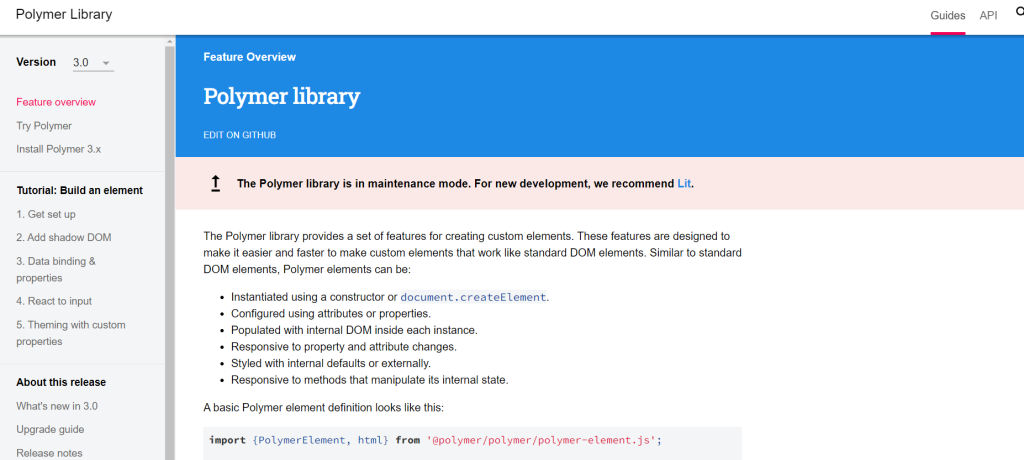
Polymer, developed by Google, is one of the main web development frameworks. It enables developers to create reusable components employing web component standards. Modular encapsulation of UIs is possible with the help of inter-operable polymer libraries, which is why polymer is popular among developers.
Web Components Standards
It allows the creation of repeatable custom elements using the web component standards, which is a set of web platform APIs. It grants a standardized approach to developers for the development of web applications. With Polymer.js, developers are now able to create modular UI elements that can easily be shared and reused or extended to other frameworks.
Backbone.js: Organizer for Structured JavaScript Code
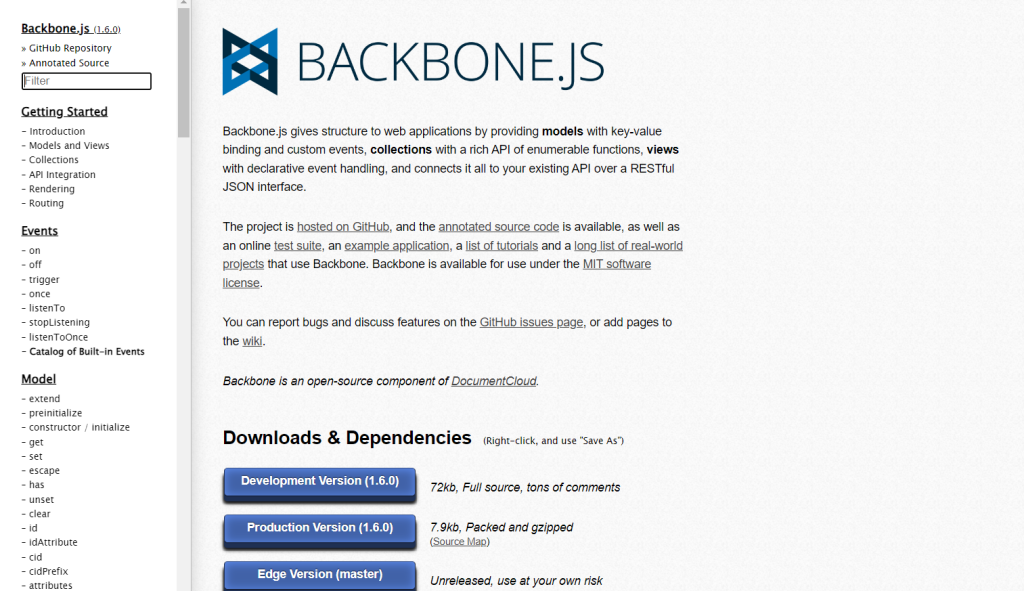
Backbone.js is a light in weight framework for JavaScript used for organizing structured code. It gives developers the ability to efficiently create single-page applications (SPAs) or client web applications. Backbone.js comes with a minimalistic approach to the development of applications on the web. Moreover, it emphasizes providing the basic components necessary to structure and maintain sophisticated JavaScript codebases.
Minimalist and Lightweight
Backbone.js takes a minimal and light approach to web development as it provides only the bare essentials needed to organize and structure JavaScript code. Unlike some other frameworks, Backbone.js keeps its core library small and focused. Furthermore, it gives flexibility to developers in extending and customizing the framework as per requirement.
Angular.js: King of Single-Page Applications
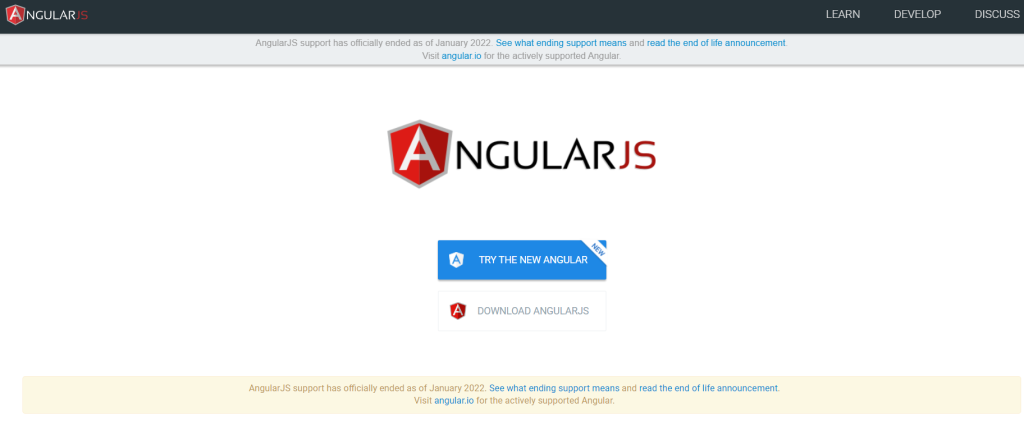
In the world of single-page applications (SPAs), Angular.js has established a strong foothold. Besides, its usage is seen when navigating across various sections of a website. Through the use of Angular.js, developers are enabled with an all-in-one solution to create dynamic and interactive web applications Owing to its diverse range of features and strong community support, Angular.js is well known as the “King” of SPAs.
Component-Based Architecture
With the use of Angular.js, developers can easily break down their applications into reusable and modular components due to its component-based architecture. Each component has its own set of templates and styles, which aids in managing complex user interfaces. Angula’s component-based approach offers code reusability and leads to better-organized scaffolding, helping build large-scale applications effortlessly.
Ember.js: Robust Framework for Scalable Single-Page Applications
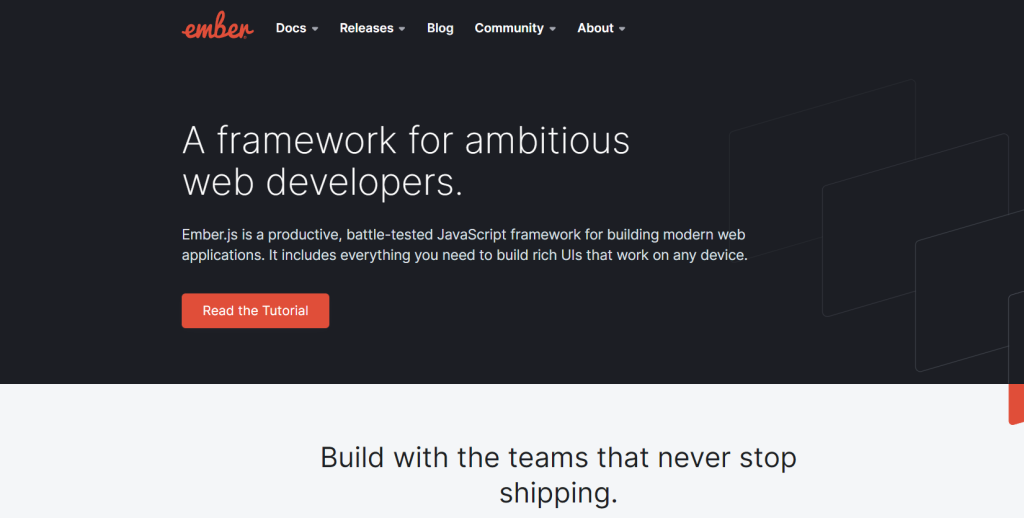
As one of the most popular frameworks for single-page applications, or SPAs, Ember.js offers a complete solution for developers. Built taking into consideration productivity and stability, Ember.js assists developers with the appropriate tools to create web applications easily. In addition, it has become a favorite framework among developers who are looking for a dependable system to develop challenging web applications.
Convention over Configuration
An important trademark of Ember.js is its philosophy of “convention over configuration.” This aims to make common, repeating tasks easier by reducing boilerplate. Each application structure comes with a specific set of conventions and best practices that developers need to follow. This also enables them to concentrate on building features rather than configuring settings. Such opinionated practices increase consistency, sustainability, and cooperation within development groups. Ultimately, this makes it easier to onboard new developers and maintain large codebases.
Svelte: Lightweight, Efficient Framework with Compiler-First Approach
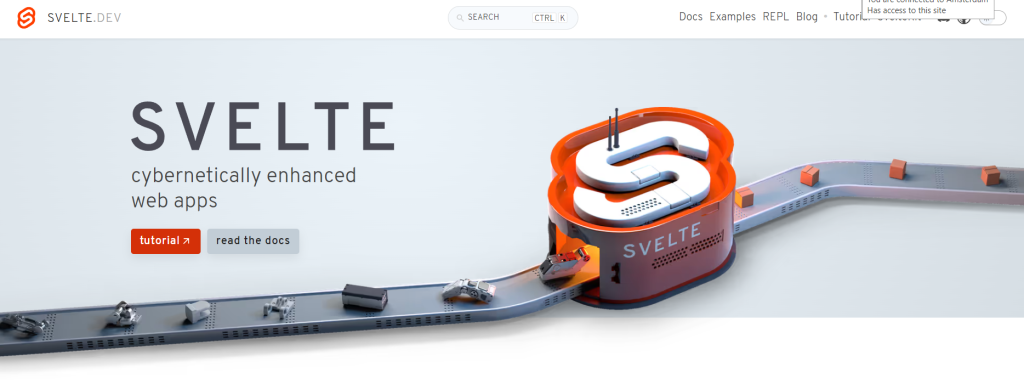
Svelte is considered the most powerful framework in web development. Its compiler-first approach enables both lightweight applications and efficient performance. Unlike traditional web frameworks, Svelte does not utilize the browser for heavy lifting. Instead, Svelte’s emphasis on simplicity, effectiveness, and overall experience for the developer enables its wide-scale usage among developers.
Developer Experience
Assisting developer experience, Svelte provides intuitive workflows that vastly cut down excess work. Incorporating features such as reactive declarations and assignments allows for effortless creation of complex web applications. Developers also get ease of integration due to Svelte’s vast range of tools and other resources in its ecosystem.
Conclusion: How to Choose the Best JS Framework?
Performance, the available ecosystem, and maintenance over time are key attributes to look into when determining the best framework. Using a combination of team expertise along with the listed attributes will enable effective long-term development. Understanding the scale, complexity, and features needed in a project helps in making smart decisions.
Also, prioritize systems with effective performance optimizations and a rich ecosystem of tools and libraries for sustainability over time. This decision can be made by evaluating the given criteria that meet your project objectives and team skills.
Are you prepared to start your web development adventure? Explore the hosting services offered by Ultahost. Rent a VPS for effortless deployment and scaling for your next JavaScript application.
FAQ
What is the difference between a JS framework and a library?
A JavaScript framework provides a pre-defined structure and set of tools for building web applications. In contrast, a library offers specific functionalities that developers can use within their applications. Frameworks typically dictate the overall architecture and flow of an application. At the same time, libraries focus on providing reusable code for specific tasks.
What is a JavaScript framework, and why should I use one?
A JavaScript framework is a collection of pre-written code and libraries that provide developers with tools to build web applications. Moreover, frameworks offer benefits such as simplified development workflows, code organization, and performance optimizations.
Are JavaScript frameworks and libraries free to use?
Yes, most JavaScript frameworks and libraries are open-source and free to use under various licenses. Such as MIT, Apache, or GNU GPL. However, it’s essential to review the license terms and conditions before incorporating any framework or library into your project. Moreover, it ensures compliance and avoids potential legal issues.
How do I get started with learning a JavaScript framework?
To learn a JavaScript framework, you can explore official documentation, tutorials, and online resources provided by the framework’s community. Many frameworks also offer guides, interactive tutorials, and sample projects to help you familiarize yourself with features.







